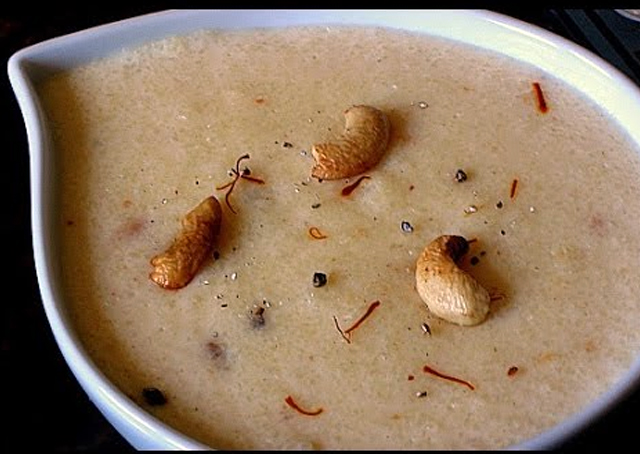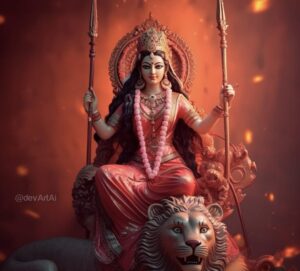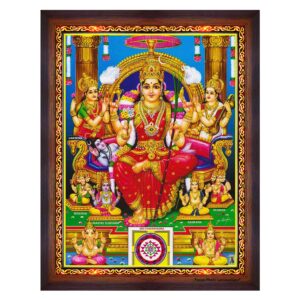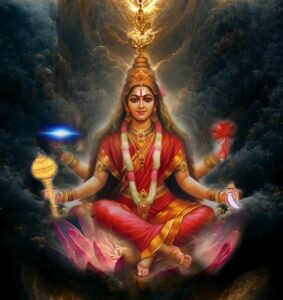In Hindu mythology, Annapurna Devi is revered as the goddess of food and nourishment and her name translates to “Anna” meaning food and “Purna” meaning full or complete. She is considered a form of the goddess Parvati, the divine consort of Lord Shiva and her significance extends beyond the culinary realm.
Mythological Significance:
The origin story of Annapurna Devi is a tale of compassion and divine grace. It is said that once, there was a cosmic competition between Lord Shiva and Goddess Parvati to prove who held the greater power of sustenance. They decided to demonstrate their abilities on Earth.
Goddess Parvati chose to take the form of Annapurna, the provider of nourishment and appeared in the sacred city of Kashi (modern-day Varanasi) in India. In this divine form, she began distributing food to the needy, creating an atmosphere of abundance and prosperity.
Meanwhile, Lord Shiva took on the role of a beggar and approached Annapurna, asking for food. The goddess recognized him but played along. She handed him a bowl of food and as he began to eat, Parvati revealed her true form to him. Lord Shiva was deeply moved by her compassion and the importance of providing sustenance to all beings. The competition came to an end, with Parvati’s divine act of nourishment being celebrated as supreme.

Appearance: Annapurna Devi is typically depicted with a vessel full of rice and other food items in one hand and a ladle in the other, signifying her role as the provider of nourishment. She is often shown with a benevolent and motherly expression, emphasizing her compassionate nature.

Significance: The worship of Annapurna Devi is a reminder of the importance of food, sustenance and the act of giving. It emphasizes the sacredness of nourishment and the gratitude that one should feel for having access to food. Annapurna Devi’s blessings are sought to ensure that no one goes hungry and to acknowledge the abundance of nature.
Worship and Rituals: Worship of Annapurna is common in many households, particularly in India, where she symbolizes the importance of food and sustenance. It emphasizes the sacredness of nourishment and the gratitude that one should feel for having access to food. Annapurna Devi’s blessings are sought to ensure that no one goes hungry and to acknowledge the abundance of nature. The act of sharing food with others and offering it to those in need is considered a form of divine worship, as it reflects the belief that providing food is a sacred and virtuous act.
Mantras to chant: ॐ भगवत्यै च विद्महे माहेश्वर्यै च धीमहि तन्नो अन्नपूर्णा प्रचोदयात्।
The provided Sanskrit mantra translates to:
“We know the Goddess, we meditate upon the Great Goddess, may Annapurna inspire us.”
In Hindu tradition, the act of consuming food is viewed as sacred and offering prayers to Annapurna Devi before meals is a way of expressing gratitude for the sustenance and nourishment provided by the goddess. This practice highlights the deep connection between spirituality, sustenance and gratitude in Hindu culture.
This mantra is an invocation to the goddess Annapurna, seeking her inspiration and blessings.
Prasadam: Cocunut Kheer (Thengai Payasam), also known as Kobbari Payasam, is a rich and creamy rice pudding infused with the goodness of fresh coconut. Thengai (in Tamil) and Kobbari (in Telugu) refer to the delightful coconut and “payasam” signifies a sweet and luscious kheer or pudding. This dish is offered to Annapurna Devi.

Alternatively, Coconut Rice, known as “kobbari Annam” in some regions and “nariyal chawal” in others, is a delightful South Indian dish. It’s a simple yet flavorful rice preparation made with freshly grated coconut and a selection of aromatic spices. This dish holds which holds a special place on festivals is also offered.
Astrological Connection: Annapurna Devi’s association with the planet Mercury is significant. She is believed to influence Mercury in one’s astrological chart. Mercury is associated with intellect, communication and the acquisition of knowledge. Devotees believe that by seeking the blessings of Annapurna Devi, they can enhance their intellectual abilities and communication skills, leading to a more fulfilled and prosperous life.
The secret of Annapurna Devi’s form lies in the profound understanding that food, nourishment and sustenance are essential not only for the body but also for the soul. Her benevolent grace ensures that no one goes hungry and that the cycle of giving and receiving food continues to sustain and enrich lives.
The worship of Annapurna Devi embodies the concept that food should be respected and shared with those in need, as it is a divine gift that sustains life. Annapurna Devi’s blessings extend not only to the physical well-being of individuals but also to their spiritual growth, as they recognize the divine grace present in every meal.
May the blessings of Annapurna Devi be a reminder of the abundance in our lives and an inspiration to share it with others, thus nurturing not only their bodies but also their spirits. In the world of Annapurna Devi, every meal is a divine offering and every act of kindness is a celebration of the universal mother’s boundless love.
Author,
Sivalenka Neeraja





